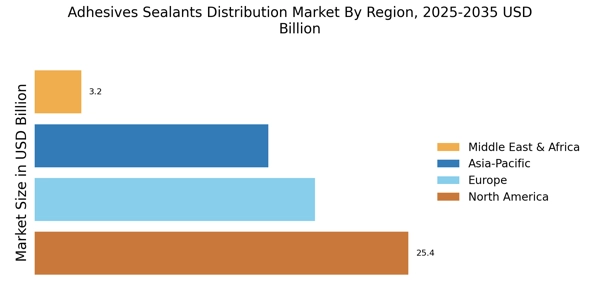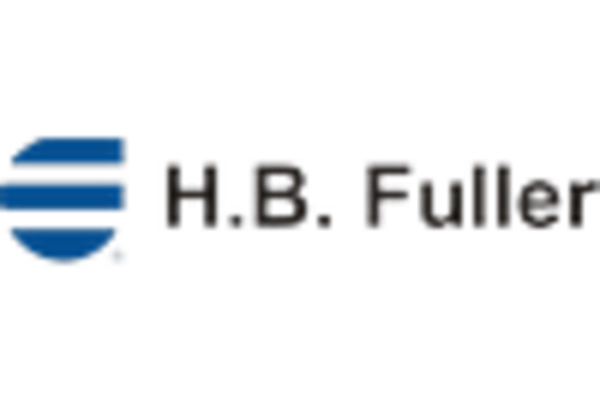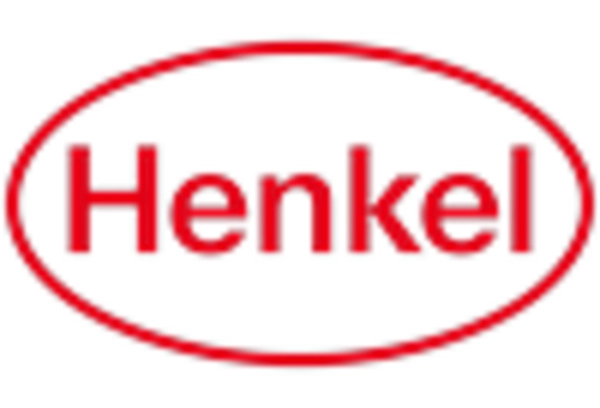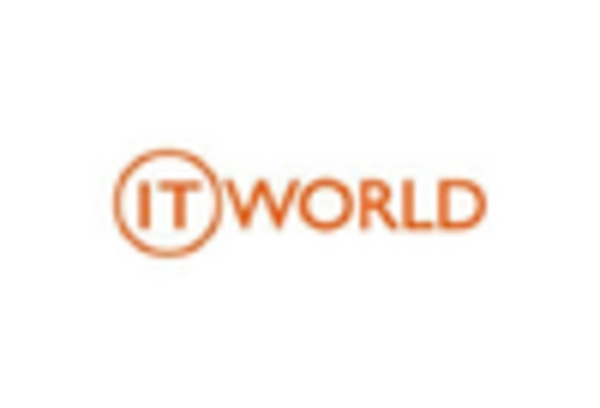Technological Innovations
The Adhesives Sealants Distribution Market is witnessing a wave of technological innovations that are reshaping product offerings and applications. Advancements in formulation technologies are enabling the development of high-performance adhesives and sealants that cater to diverse industrial needs. For instance, the introduction of smart adhesives that respond to environmental changes is gaining traction in various applications. Moreover, the integration of automation and robotics in manufacturing processes is enhancing production efficiency and reducing costs. As industries increasingly adopt these technologies, the Adhesives Sealants Distribution Market is likely to experience a transformation, with new products entering the market that meet evolving consumer demands and regulatory standards.
Automotive Industry Expansion
The Adhesives Sealants Distribution Market is significantly influenced by the expansion of the automotive sector. As automotive manufacturers increasingly focus on lightweight materials to improve fuel efficiency, the demand for advanced adhesives and sealants is expected to rise. The automotive industry is projected to witness a growth rate of around 4% annually, which will likely bolster the adhesives and sealants market. These materials are crucial for various applications, including structural bonding, interior assembly, and exterior sealing. Additionally, the shift towards electric vehicles is creating new opportunities for adhesive solutions that can withstand higher temperatures and provide enhanced durability, further driving the growth of the Adhesives Sealants Distribution Market.
Increased Demand in Packaging
The Adhesives Sealants Distribution Market is benefiting from the rising demand for packaging solutions across multiple sectors. With the growth of e-commerce and retail, the need for effective packaging materials has surged, leading to an increased requirement for adhesives and sealants. The packaging industry is expected to grow at a rate of approximately 3.5% per year, which will likely enhance the demand for adhesive solutions that ensure product integrity and safety. Furthermore, the trend towards sustainable packaging is prompting manufacturers to innovate and develop eco-friendly adhesive products, thereby expanding the market potential. This shift not only addresses consumer preferences but also aligns with regulatory requirements, positioning the Adhesives Sealants Distribution Market for sustained growth.
Rising Construction Activities
The Adhesives Sealants Distribution Market is experiencing a notable surge due to the increasing construction activities across various sectors. As urbanization continues to expand, the demand for adhesives and sealants in residential, commercial, and industrial construction is on the rise. According to recent data, the construction sector is projected to grow at a compound annual growth rate of approximately 5% over the next few years. This growth is likely to drive the demand for high-performance adhesives and sealants, which are essential for bonding and sealing applications in construction projects. Furthermore, the trend towards energy-efficient buildings is pushing manufacturers to develop innovative adhesive solutions that meet stringent regulatory standards, thereby enhancing the overall market landscape.
Growing Focus on Sustainability
The Adhesives Sealants Distribution Market is increasingly influenced by the growing focus on sustainability and environmental responsibility. As consumers and businesses alike prioritize eco-friendly products, manufacturers are compelled to innovate and develop sustainable adhesive solutions. This trend is reflected in the rising demand for bio-based adhesives and sealants, which are derived from renewable resources. The market for sustainable adhesives is projected to grow at a rate of around 6% annually, indicating a significant shift in consumer preferences. Additionally, regulatory pressures are driving companies to adopt greener practices, further propelling the growth of the Adhesives Sealants Distribution Market. This focus on sustainability not only enhances brand reputation but also aligns with global efforts to reduce environmental impact.


















Leave a Comment